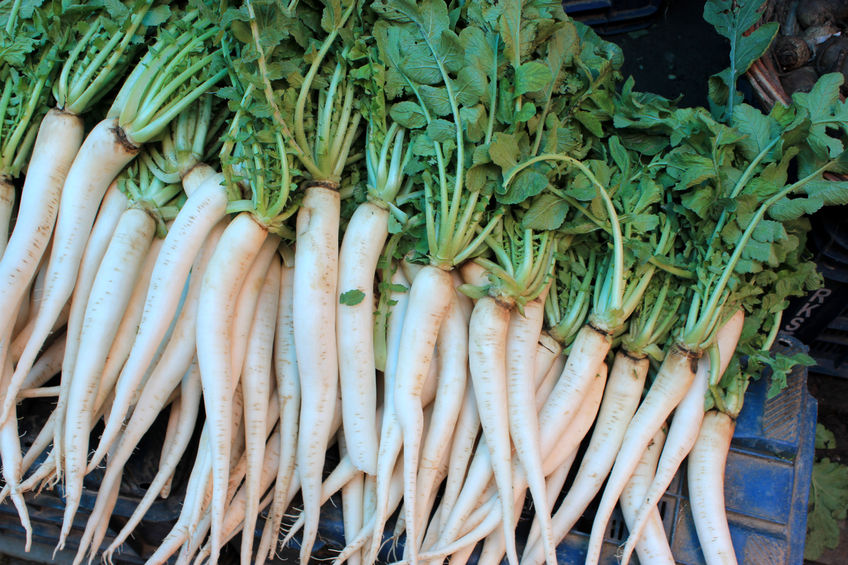radish
When you think of radish (Raphanus sativus), you immediately think of a cozy beer garden atmosphere with "Radi," beer, and pretzels. However, the more or less spicy root is also excellent in salads or as a topping for bread. Radish contains plenty of vitamin C, fruit acids, minerals, and mustard oils; not to mention its healing properties.

Planting time – When is best?
Sowing of early varieties under glass or plastic film can begin as early as February/March, while summer varieties can be planted starting in late March. Autumn and winter varieties can even be sown into August.
Growing radishes – how does it work?
Radishes are grown in rows. Depending on the expected size according to the seed packet, the distance between plants should be 20 to 50 cm. The ideal seeding depth is 2 to 3 cm.
Location – Where is best?
The soil should be light, loose, and humus-rich. Radish has a moderately high nutrient requirement, although fresh organic fertilizer can increase disease and pest infestation. A three-year break from growing radishes or other cruciferous vegetables should be observed.
Care – What needs to be done?
The soil must be kept evenly moist and loosened between the rows. A boron-containing mineral fertilizer is used for fertilization, with nitrogen application limited to 5 g per square meter. Fertilization should preferably be carried out in two to three applications.
Harvest – What should you consider?
You can harvest summer radish as soon as you're happy with its size. If left standing too long, it can develop a slightly bitter and fuzzy taste. Winter radish must be harvested before the first frost. Covered in sand and then stored in a cool cellar or in a pit, it will keep until spring.
Mixed culture – What are good neighbors
Beans, peas, cabbage, carrots and lettuce are suitable neighbors for radishes.
Botany – What kind of plant is this?
The radish is a herbaceous, annual or perennial plant belonging to the cruciferous family. It has many subspecies that vary in color and shape. There are red, pink, white, purple, and black tubers, whose shape can be oval, bulbous, cylindrical, or sometimes cone- or conical. After the first roots sprout in spring, the actual radish grows. The flowers, arranged in loose clusters, consist, as with all cruciferous plants, of four petals.
Cultural history – How did the radish come to us?
The radish was already known in ancient Egypt around 4,000 years ago and was used as a medicinal food plant and for oil production. Around 50 BC, the Romans brought the radish to us across the Alps. In the Middle Ages, it was primarily cultivated as a medicinal plant in monastery gardens, as it was believed to have expectorant properties. Even today, radish is often used for diuretics and detoxification, or as a cough suppressant.
TEXT: Annette Henning












